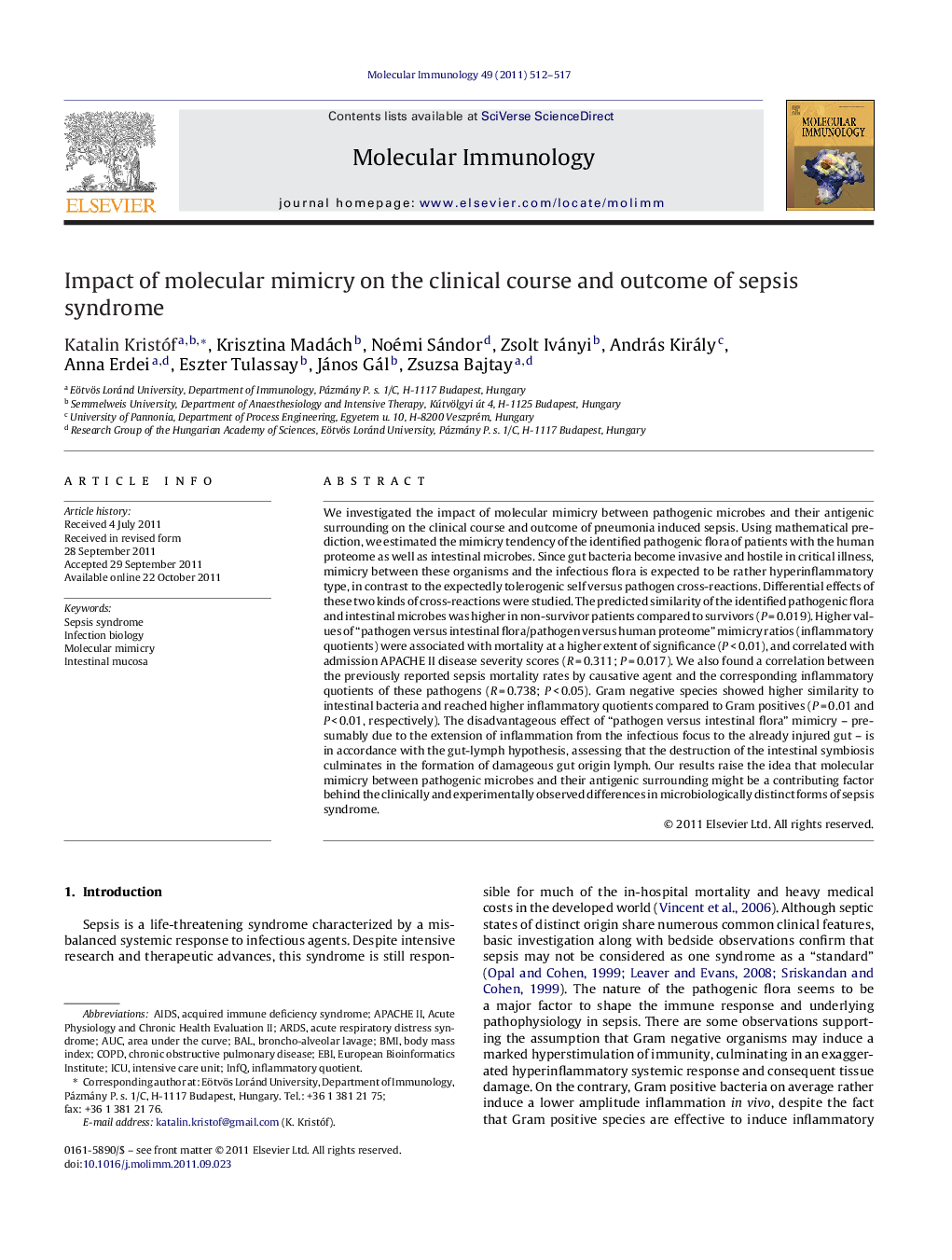| کد مقاله | کد نشریه | سال انتشار | مقاله انگلیسی | نسخه تمام متن |
|---|---|---|---|---|
| 2831298 | 1163793 | 2011 | 6 صفحه PDF | دانلود رایگان |

We investigated the impact of molecular mimicry between pathogenic microbes and their antigenic surrounding on the clinical course and outcome of pneumonia induced sepsis. Using mathematical prediction, we estimated the mimicry tendency of the identified pathogenic flora of patients with the human proteome as well as intestinal microbes. Since gut bacteria become invasive and hostile in critical illness, mimicry between these organisms and the infectious flora is expected to be rather hyperinflammatory type, in contrast to the expectedly tolerogenic self versus pathogen cross-reactions. Differential effects of these two kinds of cross-reactions were studied. The predicted similarity of the identified pathogenic flora and intestinal microbes was higher in non-survivor patients compared to survivors (P = 0.019). Higher values of “pathogen versus intestinal flora/pathogen versus human proteome” mimicry ratios (inflammatory quotients) were associated with mortality at a higher extent of significance (P < 0.01), and correlated with admission APACHE II disease severity scores (R = 0.311; P = 0.017). We also found a correlation between the previously reported sepsis mortality rates by causative agent and the corresponding inflammatory quotients of these pathogens (R = 0.738; P < 0.05). Gram negative species showed higher similarity to intestinal bacteria and reached higher inflammatory quotients compared to Gram positives (P = 0.01 and P < 0.01, respectively). The disadvantageous effect of “pathogen versus intestinal flora” mimicry – presumably due to the extension of inflammation from the infectious focus to the already injured gut – is in accordance with the gut-lymph hypothesis, assessing that the destruction of the intestinal symbiosis culminates in the formation of damageous gut origin lymph. Our results raise the idea that molecular mimicry between pathogenic microbes and their antigenic surrounding might be a contributing factor behind the clinically and experimentally observed differences in microbiologically distinct forms of sepsis syndrome.
► Molecular mimicry between pathogens and gut microbes is disadvantageous in sepsis.
► The gut-lymph hypothesis may explain harmful effects of mimicry in sepsis syndrome.
► T-lymphocytes seem to play a significant role in the pathomechanism of sepsis.
► Mimicry may contribute to unique features of microbiologically diverse sepsis forms.
Journal: Molecular Immunology - Volume 49, Issue 3, December 2011, Pages 512–517